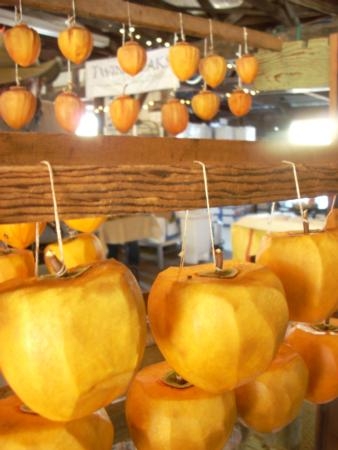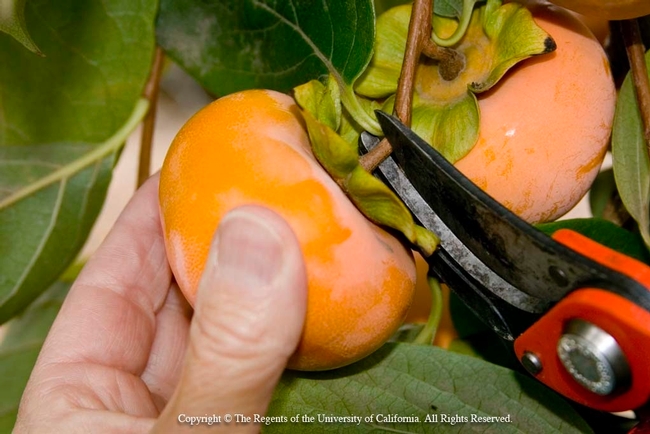Persimmons and hoshi gaki - An alternative to persimmon cookies
I have to admit that I am not a big fan of the flavor of persimmons with one exception … dried. Dried persimmons have a more intense flavor and make a wonderful, healthy snack. I have dried the Fuyu persimmons by just cutting the fruit horizontally into about ¼-inch thick slices and then putting them in the food dryer. It is a very easy method to preserve the fruit. They are tasty little treats but they can be a bit leathery and brittle.
This year I tried a different method of drying my fruit called hoshi gaki. In Japanese, hoshi means dried and gaki comes from kaki, the Japanese term for persimmon. This is a traditional Japanese method that uses the Hachiya variety of whole firm ripe persimmons. Normally, the Hachiya variety has to be fully soft before eating to remove the astringency. The pulp then is used in a lot of baked products or smoothies. However, with this method of drying, the fruits are perfect when they are harvested while still firm.
Fruit is typically harvested in late September through early November. Be sure you retain the stem when harvesting; you will need it to hang the fruit. The fruit is peeled, and hung whole to dry in a warm area with good air circulation and protected from rain. The fruit is allowed to hang for about 3 and 7 days until it forms a skin on the outside. The fruit is then gently hand massaged to break up the hard inner pulp. The massage process is repeated every 3 to 5 days for 3 to 5 weeks. When the fruit is ready, a bloom of sugars forms on the surface, creating a fancy white coating. You can tell when the fruit is ready when the pulp is set and you can no longer roll it around. You then remove it from the hanging rack. I like to flatten the fruit out using a rolling pin and then layer and stack the dried fruit for storage. If you package them in a fancy container, they make lovely hostess or holiday gifts.
This traditional method of processing persimmons is virtually gone from the commercial markets but there are many small growers who have the skill, dexterity and patience to process fruit in this time consuming way. You may be able to find them at your local farmers markets if you want to try them. If you have a Hachiya persimmon tree in your yard and want to find ways to use the fruit, give this method a try next year. For more information on growing persimmons check out The Backyard Orchard Website or The Home Orchard Manual

Drying whole Hachiya persimmons.




1) Do you leave the seeds intact in the fruit, and does this cause a problem when you eat the dried fruits?
2) Can you use Fuyu persimmons for hoshigaki?
Posted by Ann Filmer on November 26, 2012 at 11:37 AM